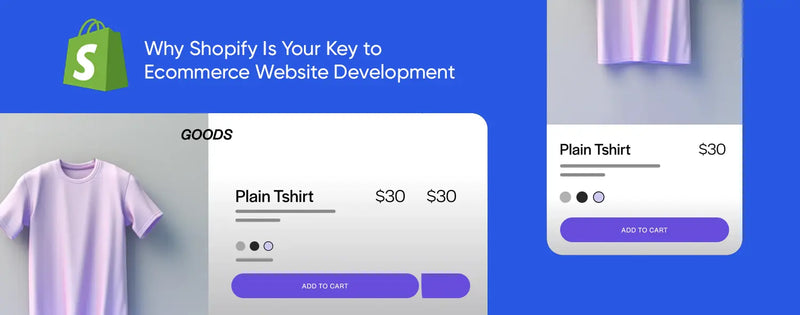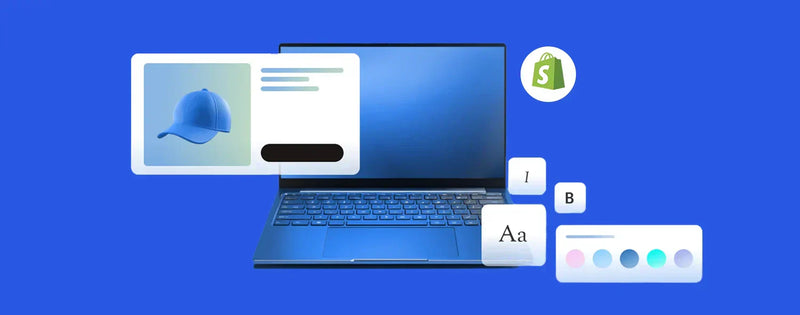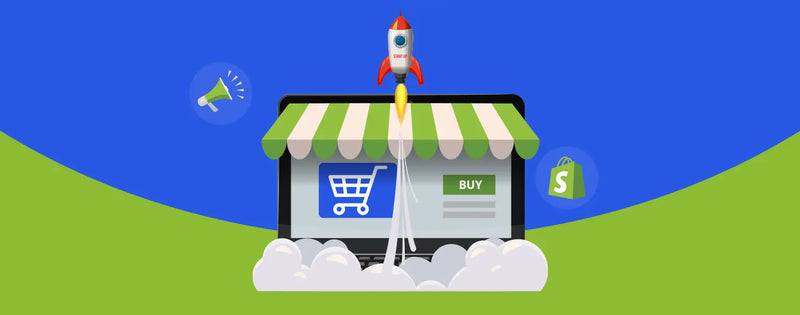Table of Contents
Overview
Get to know how to build an ecommerce website in 10 easily understandable steps starting with choosing the right platform for marketing & SEO. This guide will lead you through all the steps to start and optimize your online store to achieve success, whether you are starting a Shopify store, or migrating an existing platform. Includes ecommerce websites, product listing platforms, ecommerce payment gateways, ecommerce content marketing, ecommerce search engine optimization, etc.
Learning how to build an ecommerce website is not a one time process but a complete journey. The world is moving towards ecommerce sales of up to $8 trillion in the coming 2027 and this is the right time to venture into the digital retail field.
It will be a step-by-step guide on how to build an ecommerce website, including planning and the choice of platform, as well as launching and optimization. These ten basic steps will guide you through the process of making an online store professional whether you are an entrepreneur or a brand owner.

10 Steps on How to Build Ecommerce Websites
Did you know?
“More than three-quarters of consumers confirm that they evaluate the credibility of the brand through its web design.”
- Why You Should Invest in Good Website Design to your B2B Company | Kinesis.
Designing an ecommerce website does not only involve establishing an online storefront but also a structured online experience that resonates with your audience and motivates them to purchase. Although the number of tools and platforms offered in the present day is infinite, the actual problem is where to begin keeping everything in motion and how to make all the gears fit into the ultimate puzzle.
With this easy-to-follow guide, you will be able to turn your idea into a fully-functioning store that embodies the identity of your brand, appeals to customers, and sells. We will discuss 10 clear steps on how to build an ecommerce website and earn profit in the long-term.
Step 1: Establish Your Business Objectives and Targe
 Any successful store begins with an idea.
Any successful store begins with an idea.
The first step is to choose the products or services that you are going to be selling and figure out who are your ideal customers. Determine their needs, preferences and pain points. Developing buyer personas - imaginary characters of perfect customers may assist in making selections, design, and marketing of the product.
Examples: Shopify also focuses on audience research and product sourcing as the first steps.
Then, register your business and acquire a domain name.
Business Registration: Select business name and business structure.
Domain Name: This is the address of your web site (e.g., www.yourstore.com).
- Make it brief, easy to remember and brand related.
- Register early to avoid losing it to another brand.
- If you’re using Shopify or Wix, hosting is included.
For open-source platforms like WooCommerce, you’ll need to buy separate hosting.
Key Tasks:
- Define your products and target audience.
- Develop elaborate buyer images or demographics.
- Register a domain name at the initial stage.
Step 2: Choose a Platform and Host Your Website
Your ecommerce platform is the foundation of your store and that's why choosing the right one is the most essential step in how to build an ecommerce website. There are two main types:
Hosted (SaaS) vs. Self-Hosted Ecommerce Platforms
|
Feature |
Shopify (Hosted SaaS) |
BigCommerce (Hosted SaaS) |
WooCommerce (Self-Hosted) |
Magento / Adobe Commerce (Self-Hosted) |
|
Ease of Use |
Very user friendly with a drag and drop interface. No coding required. |
Easy to use yet a little less intuitive than Shopify. |
Technical skills are needed as well as knowledge of WordPress. |
Complex, steep learning curve. |
|
Setup Time |
Quick setup, the store can go live in a few hours. |
Fast setup, similar to Shopify. |
Longer setup as you need to install WordPress, plugins, and configure hosting. |
Requires extensive setup, often weeks before going live. |
|
Hosting & Security |
Hosting included with SSL certificates and PCI compliance. |
Hosting included basic security features. |
Separate hosting required; SSL and PCI compliance must be set up manually. |
Separate hosting required; advanced security setup needed. |
|
Customization |
Large app store, customizable themes, and integrations. Limited back-end control. |
Customizable but fewer third-party apps compared to Shopify. |
Highly customizable through WordPress plugins and code. |
Fully customizable; ideal for complex, large-scale stores. |
|
Cost |
Starts at $29/month with no extra hosting fees. |
Starts at $39/month, hosting included. |
Free plugin, but hosting, themes, and plugins can add up to $50–$200+/month. |
Free to install, but hosting and developer costs are $200–$1000+/month. |
|
Scalability |
Scales easily as your business grows. |
Scales well but with fewer built-in tools compared to Shopify. |
May face performance issues with high traffic unless optimized. |
Excellent scalability for enterprise-level businesses. |
|
Support |
24/7 customer support via chat, email, and phone. |
24/7 support but response times may vary. |
Community forums and third-party developer support only. |
Support mainly through paid developers or agencies. |
|
Best For |
Novices, small to medium enterprises, dropshipping, and high growth brands. |
Small to medium businesses seeking a straight forward SaaS solution. |
Store owners that desire total control and already use WordPress. |
Big companies with sophisticated requirements and well-staffed technology units. |
|
Why Choose This Option? |
Shopify is a web hosting, design, apps, and marketing tools all in one, which is ideal to startup businesses and allows one to focus on growing. |
Appropriate to companies that require hosted capabilities but a bit more complexity than Shopify. |
Recommended to users who wish to have a low cost version and are not afraid of technical issues. |
Best suited to companies that require tailored solutions and integrations. |
Popular Options:
- Shopify: Easy and hassle-free, hosting, and one-stop solution.
- BigCommerce: Scalable platform with zero transaction fees.
- WooCommerce: Open-source, very customizable (you have to host it).
- Magento: Large catalogs Enterprise level.
Pro Tip: Shopify is a good place to begin with, in case you want to start as fast as possible without getting involved in technical problems.

Step 3: Creating Brand & Website
 The first impression is the brand identity that brings trust.
The first impression is the brand identity that brings trust.
Focus on these core elements:
- Logo
- Color scheme
- Fonts
- Unique branding voice.
Sample: A powerful and compelling “About Us” page, with an emotional story connecting the company and the customers.
Choose a Theme:
- Most platforms offer free and paid templates.
- Pick a clean, professional, responsive theme.
Customize Your Design:
- Use your brand colors, fonts and images
- Make it easily navigable with easy menus and search.
- Optimize to mobile because online sales made up of more than 60 percent are made by mobile.
Must-Have Pages:
- Homepage
- Product Pages
- About Us
- Contact Us
- Shipping and Returns (Shipping)
- Privacy Policies (Privacy)
Step 4: Add Products & Content
 Your store is now ready to be filled with products and persuasive content.
Your store is now ready to be filled with products and persuasive content.
Organize Your Catalog:
- Formulate logical groups (e.g. Men Shoes, Summer Dresses).
- Ensure the browsing is easy from filters and sorting.
Add Products:
- Post quality photos (variety of angles, zoom-ins and lifestyle shots).
- Write a description with key words that brings out the benefits and features.
- Add SKU numbers, variants (sizes, colors), and inventory.
Bonus Tip: It is worth considering a blog or resource center to optimize the SEO and train the customers.
Example: Organic traffic may be attracted through a blog post on the topic of Caring of Organic Cotton T-Shirts and it helps to facilitate sales.
Step 5: Establish Payments and Security

An efficient checkout process creates customer confidence.
Payment Gateways:
Integrate popular options like:
- PayPal
- Stripe
- Apple Pay
- Shopify Payments (assuming Shopify)
Provide more than one way of payment to minimize cart abandonment.
Security Essentials:
- SSL Certificate (HTTPS) of encrypted transactions.
- Tools such as Signifyd or inbuilt fraud protection systems.
- Checks on address and CVV of high value goods.
Checklist:
- Do trial runs to make sure that all is well.
- Check whether tax rates are properly applied (see Step 6).
Step 6: Set up Shipping, Tax & Logistics
In the case of physical products, effective shipping and tax arrangements are important.
Shipping:
- Choose between flat-rate, weight-based or real-time carrier rates (UPS, FedEx).
- Provide free shipping at home to get more conversions.
Automate:
- Label printing
- Tracking updates
- Inventory syncing
Taxes:
- Determine tax rates depending on the location of the customers.
- Compliance and automated filing Use tax services such as Avalara.
Pro Tip:
Show the shipping fees and delivery dates to prevent the abandonment of carts.
Step 7: Improve Website Search & Customer Services
 Excellent customer service = increased conversions.
Excellent customer service = increased conversions.
Website Search:
- Add a salient search box.
- Allow filtering for price, size, color, etc.
Personalization:
Use sophisticated search applications such as Algolia or Searchspring.
- Customer Support:
- Provide chat or chatbots to get real-time assistance.
Offer easy contact opportunities:
- Phone
- Support ticket system
Construct an FAQ page to be able to answer frequent questions.
Statistics: 73 percent of customers indicate that good service to them is more about the value of time.
Step 8: SEO & Launch Marketing Optimization
The best store will not work when nobody discovers it.
SEO Basics:
- In page titles, meta description and your product pages, use relevant keywords.
- Add alt text to images.
- Adopt systematic information to enhance search engine presence.
Marketing:
- Produce some first-time content, such as blogs, videos and social posts.
- Gather an email list of pre-launch.
- Plan such ads as Google Shopping or social ads.
Analytics Setup:
-
Add such tools as Google Analytics and Facebook Pixel to advance performance within the first days.
Step 9: Test Each Bit of the Process
Test all the features in advance in order to prevent customer frustrations.
Testing Checklist:
- Shopping cart and checkout process
- Mobile responsiveness
- Site speed (optimize images and code)
- Search, filters, and navigation
- Order confirmation emails and tracking updates
- Ask colleagues or peers to make imitations and give feedback
Step 10: Monitor, Optimize and Launch
It’s time to go live!
- Point your domain and ensure that you have the SSL enabled.
- Promote through social media, email and advertisements.
- Provide special offers such as free shipping or opening offers.
Post-Launch Actions:
- Follow analytics in order to learn customer behavior.
- Determine and correct the shopping path.
- Hacking and adding new products and updating content.
Pro Tip:
It is not only the building of your website. Continuous optimization such as switching to Shopify, enhancing SEO, and improving marketing is the key to success in the long run.
Conclusion
Developing ecommerce website is not about establishing an online storefront but rather a customer-oriented experience that makes people trust, makes them buy, and continue growing in the long term. Selecting an appropriate platform and establishing payments through the optimization of SEO and providing a smooth customer service experience, every piece of the puzzle is of utmost importance in your online success. Starting with nothing or moving an existing business, it does not stop at the launch point, it is constant optimization in designing, marketing, and contacting the customers that will make a successful brand.
Build an Ecommerce Website with ShopX!
Looking to start or expand your online business?
ShopX develops high-performing Shopify websites that aim at building traffic, enhancing conversions, and raising revenues. We provide custom Shopify development services to help you achieve your business objectives. Whether you are beginning afresh, migrating to another platform or fine-tuning a pre-existing store, our Shopify developers can help.
Our designers will make sure your store is scalable and successful in the long run with products like custom theme design, integration of apps, and search engine optimization.
Get in contact with ShopX and create a Shopify store that sells and is unique.








